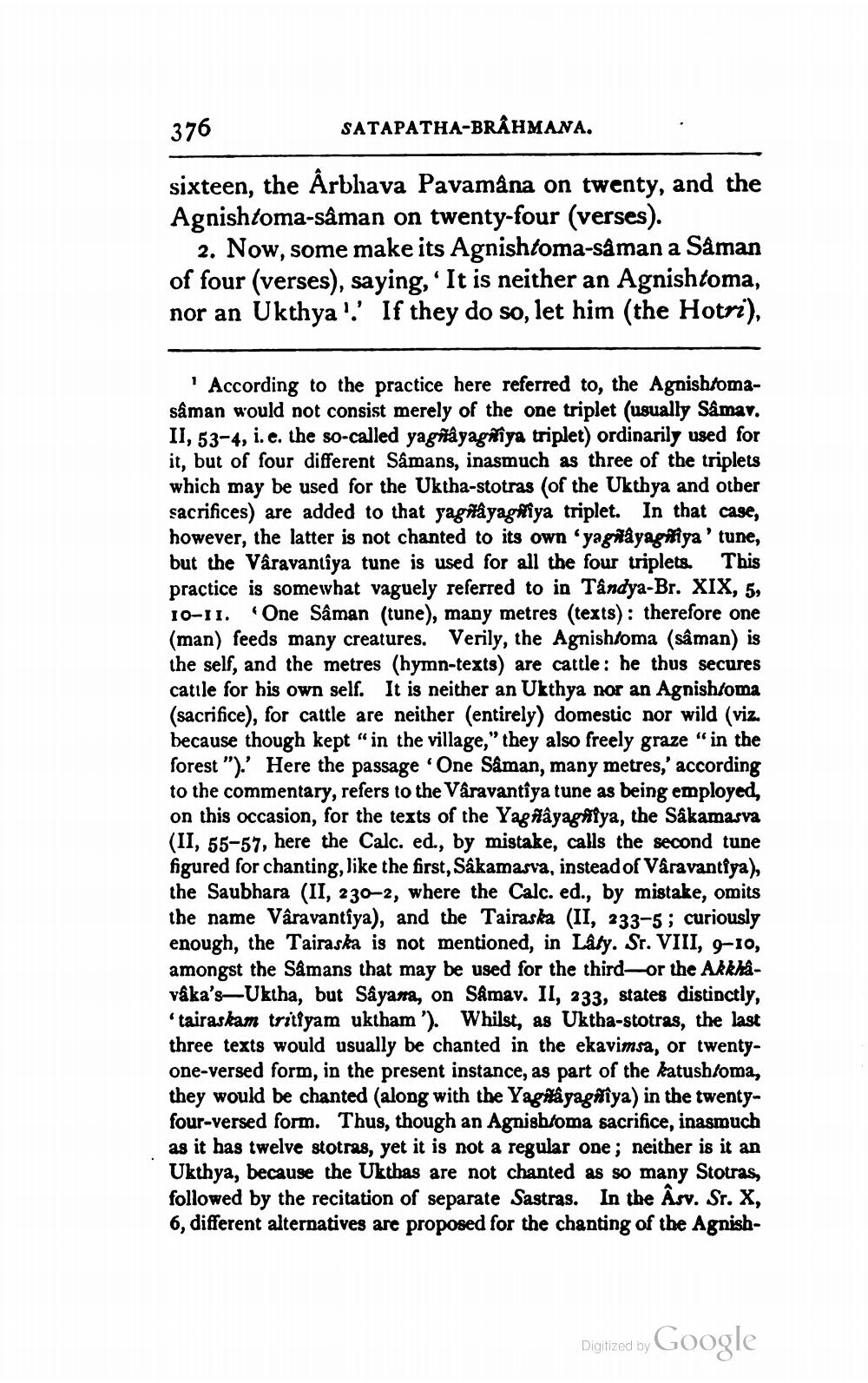________________
376
SATAPATHA-BRAHMANA.
sixteen, the Årbhava Pavamâna on twenty, and the Agnishtoma-saman on twenty-four (verses).
2. Now, some make its Agnishtoma-saman a Saman of four (verses), saying, 'It is neither an Agnishtoma, nor an Ukthya'' If they do so, let him (the Hotri),
According to the practice here referred to, the Agnishtomasaman would not consist merely of the one triplet (usually Sâmav. II, 53-4, i.e. the so-called ya gñayagãiya triplet) ordinarily used for it, but of four different Sämans, inasmuch as three of the triplets which may be used for the Uktha-stotras (of the Ukthya and other sacrifices) are added to that yag tyaghiya triplet. In that case, however, the latter is not chanted to its own 'yagñayagiriya 'tune, but the Vâravantiya tune is used for all the four triplets. This practice is somewhat vaguely referred to in Tandya-Br. XIX, 5, 10-11. One Saman (tune), many metres (texts): therefore one (man) feeds many creatures. Verily, the Agnishtoma (sâman) is the self, and the metres (hymn-texts) are cattle: he thus secures catile for his own self. It is neither an Ukthya nor an Agnishtoma (sacrifice), for cattle are neither (entirely) domestic nor wild (viz. because though kept "in the village," they also freely graze "in the forest"). Here the passage One Saman, many metres,' according to the commentary, refers to the Våravantîya tune as being employed, on this occasion, for the texts of the Yagñlâyaghiya, the Såkamasva (II, 55-57, here the Calc. ed., by mistake, calls the second tune figured for chanting, like the first, Sakamasva, instead of Varavantiya), the Saubhara (II, 230-2, where the Calc. ed., by mistake, omits the name Vâravantiya), and the Tairaska (II, 233-5; curiously enough, the Tairaska is not mentioned, in Laty. Sr. VIII, 9-10, amongst the Såmans that may be used for the third-or the Akkhavaka's-Uktha, but Såyana, on Såmav. II, 233, states distinctly, "tairaskam tritiyam uktham '). Whilst, as Uktha-stotras, the last three texts would usually be chanted in the ekavimsa, or twentyone-versed form, in the present instance, as part of the katushtoma, they would be chanted (along with the Yagnâ yagñîya) in the twentyfour-versed form. Thus, though an Agnisbloma sacrifice, inasmuch as it has twelve stotras, yet it is not a regular one; neither is it an Ukthya, because the Ukthas are not chanted as so many Stotras, followed by the recitation of separate Sastras. In the Âsv. Sr. X, 6, different alternatives are proposed for the chanting of the Agnish
Digitized by Google




